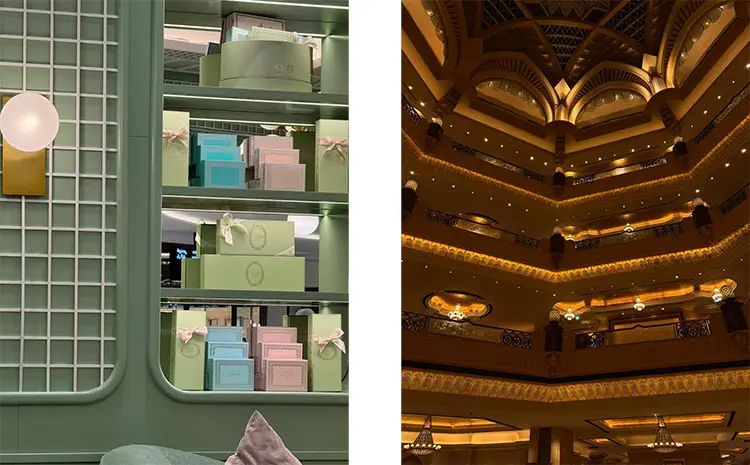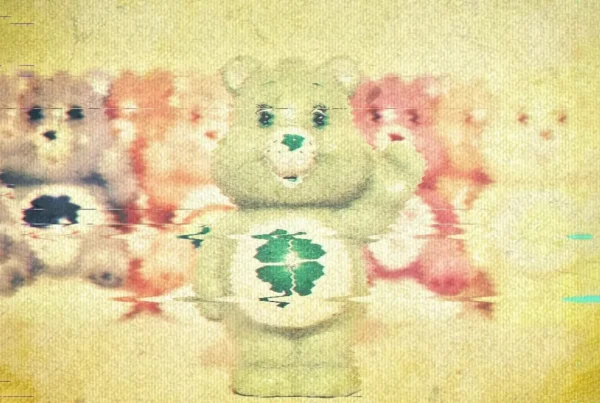“Photography became my language — a way to translate emotion and time into something both subtle and permanent.”
Shifting Lenses: From Sketchbook to Shutter
Valeriia Trushina’s path into visual storytelling began not behind the camera, but with the quiet precision of a pencil. Her early education in drawing laid the groundwork for a refined sensitivity to composition and atmosphere, sharpened by plein air sessions that immersed her in natural light and open landscapes. Yet it was during one of these outdoor excursions that photography quietly claimed her focus. After finishing a sketch in a local park, she noticed how the shifting light through tree branches held an emotional depth that pencil lines couldn’t quite convey. That experience planted the seed for a deeper engagement with imagery that is immediate, atmospheric, and emotionally resonant. Photography offered her a way to hold onto fleeting moments — not just visually, but emotionally — capturing what words or graphite could not.
Her creative process is deeply tied to how she processes the world around her. Photography, for Trushina, became more than a technique — it became a language that could translate stillness, reflection, and emotion into something tangible. She found herself increasingly drawn to capturing quiet moments in everyday spaces, scenes that might otherwise be overlooked. Each image became a kind of meditation, both observational and deeply personal. This mode of seeing has grown into a consistent visual language grounded in stillness and emotional restraint, making her work instantly recognizable for its contemplative character.
The themes that populate Trushina’s work — solitude, time, and the stories unspoken within ordinary places — reflect not only her aesthetic values but also her ongoing inquiry into the human condition. Her photographs, while often minimal in composition, are layered with narrative ambiguity. Empty streets, quiet interiors, and hazy skylines are rendered not as documentary images but as emotional landscapes. These spaces seem to echo with presence, even in absence. By forgoing spectacle, Trushina encourages the viewer to look again, to notice the still gestures of light and form that evoke memory and distance.
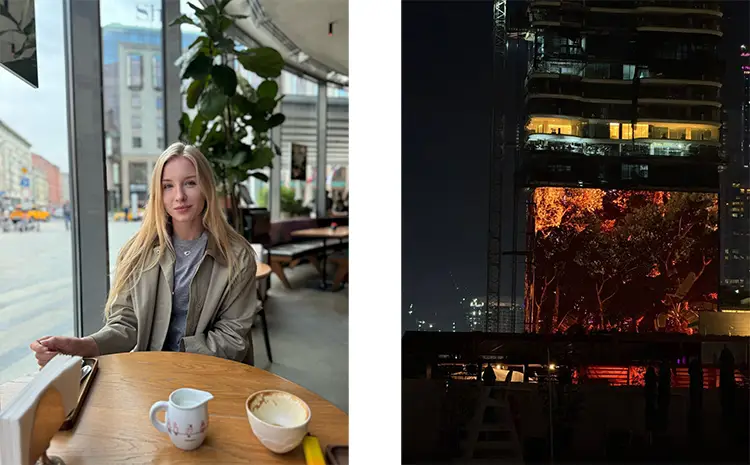
Valeriia Trushina: The Poetics of Subtle Observation
Trushina’s photographic approach speaks softly but profoundly. Her aesthetic is unmistakably minimalist, yet far from sterile. In her work, simplicity becomes a tool for emotional exploration. She constructs her compositions with precision, often allowing negative space to carry weight equal to her subjects. Through this balance, she highlights the emotional undertones of her environments — quiet streets, solitary figures, empty chairs — where meaning lingers not in what’s shown but in what’s suggested. Her commitment to understatement reveals a deliberate resistance to visual excess, allowing for a deeper connection with the viewer.
In cityscapes and architectural forms, Trushina uses structure as metaphor. Buildings become markers of human absence, while shadows, reflections, and repeating grids subtly speak of distance — not just physical, but emotional. Her use of light is particularly distinctive: soft illumination, glancing reflections, or sudden flashes of color serve not merely to highlight form, but to infuse scenes with psychological depth. A fogged window or a burst of neon amidst muted tones becomes more than a stylistic choice; it becomes part of the visual narrative. Each frame she captures seems to pause time, urging viewers to reflect on their own relationship with stillness and space.
The influence of artists such as Greg Constantine and Ami Vitale is visible in Trushina’s dedication to emotional clarity. From Constantine’s ability to tackle heavy global subjects with stark, poignant minimalism to Vitale’s lyrical interplay between humanity and nature, Trushina has drawn from their strengths while building her own unique voice. Rather than mimic, she adapts — using restraint to elevate everyday moments into poetic visual experiences. Whether through a foggy street or the glow inside an empty room, her work echoes with a sense of emotional transparency, inviting viewers to lean into quiet complexity and find resonance in what remains unsaid.
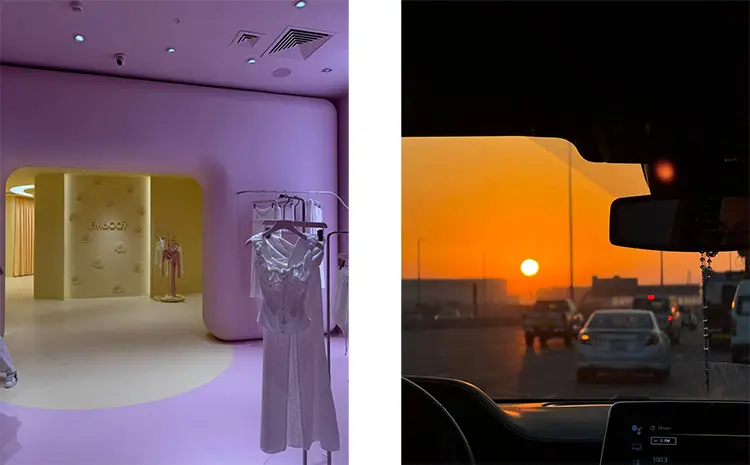
Light as Language: Mood, Memory, and Motion
Trushina’s artistic sensibility is driven by a deep attunement to mood and light. Her palette leans toward the understated — greys, pale blues, soft neutrals — often punctuated with sharper hues like pastel pinks or piercing reds. These moments of contrast don’t overwhelm; they startle just enough to draw the eye and provoke curiosity. In her hands, light is more than illumination — it becomes a narrative agent, revealing textures, suggesting movement, or disrupting space. This technique gives her work a cinematic tension, even in the quietest compositions. Scenes are neither staged nor accidental; they’re carefully observed, chosen for their ability to evoke rather than explain.
A significant photograph in her portfolio — one that continues to hold deep meaning for her — captures a landscape shrouded in morning fog. The image stands as a quiet milestone in her creative journey, symbolizing the moment she began to trust in simplicity over perfection. There’s no dramatic focal point, no exaggerated color. Yet within the haze and stillness lies a profound emotional charge. The photograph serves as a turning point in her practice, embodying her belief that emotional weight often resides in the spaces between elements — in what’s left out as much as what’s included. That image, with its muted edges and soft shadows, represents a deeper commitment to nuance and the trust that viewers will meet her work with attentiveness.
Her process is deeply intuitive, supported by a working environment that prioritizes calm and clarity. Trushina seeks quiet spaces where external distractions are minimal, allowing her to fully engage with the visual and emotional layers of her work. Time structuring plays an essential role in her practice, but intuition always leads the way. She doesn’t force images into being; rather, she waits for them to emerge — in the alignment of shadow, in the quiet of a building’s corner, or in the reflective gleam of a city at dusk. Each photo begins not with a plan but with a feeling — and it’s that emotional starting point that gives her work its distinctive tone.
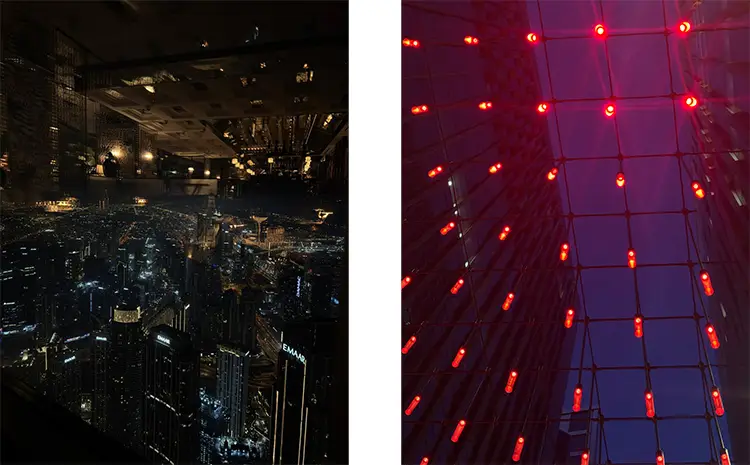
Valeriia Trushina: Mapping Urban Distance Through the Lens
Currently, Trushina is immersed in the development of a visual series centered on emotional distance within modern city environments. This project investigates how urban architecture — its rigid lines, reflective surfaces, and empty intervals — can both reveal and amplify a sense of disconnection. Rather than documenting urban life in its vibrancy or chaos, she focuses on the spaces between — the overlooked corners, the glow of an empty office, the quiet of an unpeopled sidewalk. Light plays a central role in this exploration, acting as both a divider and a bridge, cutting across spaces while simultaneously linking disparate elements. Emptiness becomes expressive rather than void.
The project continues her long-standing interest in the visual expression of solitude, but it pushes further into conceptual terrain. By using architectural elements as metaphors for emotional states, Trushina engages in a kind of psychological cartography. The city, in her images, is not just a setting — it’s an active participant in shaping human emotion. Reflections on glass facades, distant lights through mist, and silent corridors suggest a narrative of detachment. Yet these are not bleak portrayals; instead, they carry a certain tenderness, recognizing isolation as a shared and sometimes necessary state. In stripping away the noise of the city, Trushina offers a view that is both intimate and expansive.
Through this ongoing body of work, Trushina is refining a visual voice that resonates well beyond surface aesthetics. Her photographs speak to a deep human need for connection — even within, or perhaps especially within, environments built for separation. By foregrounding emotional distance, she doesn’t simply illustrate it; she invites her audience to feel it, to consider how architecture, light, and absence shape our daily emotional lives. The resulting images are not cold or detached, but quiet invitations to reflect. With each new frame, she continues to build a body of work that transforms silence into something tangible, revealing the subtle architecture of feeling that defines our shared urban experience.
